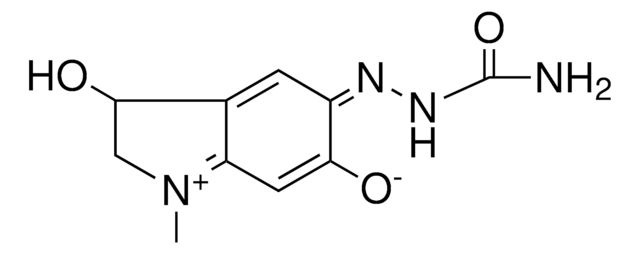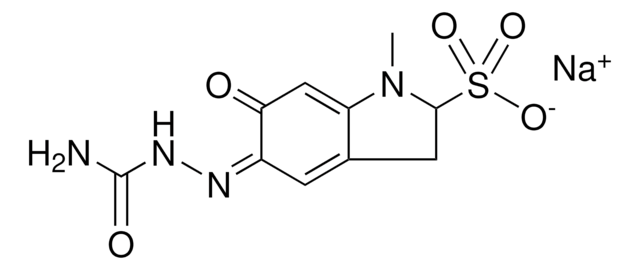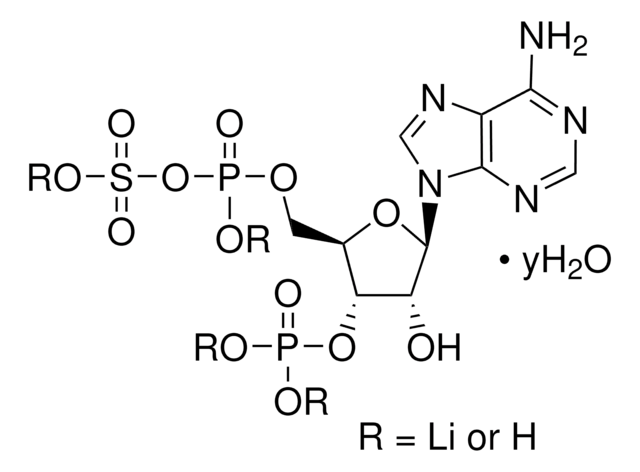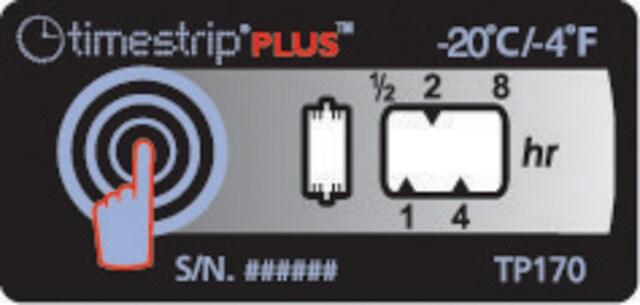A5752
Adrenochrome
>95% purity (HPLC), powder
Synonym(s):
3-Hydroxy-1-methyl-5,6-indolinedione
Sign Into View Organizational & Contract Pricing
All Photos(4)
About This Item
Empirical Formula (Hill Notation):
C9H9NO3
CAS Number:
Molecular Weight:
179.17
EC Number:
MDL number:
UNSPSC Code:
12171500
PubChem Substance ID:
NACRES:
NA.47
Recommended Products
Product Name
Adrenochrome, ≥95% (HPLC)
Quality Level
Assay
≥95% (HPLC)
form
powder
color
red to brown
εmax
3-4.5 at 485-490 nm in water
9.0-10.5 at 299-304 nm in water
application(s)
diagnostic assay manufacturing
hematology
histology
storage temp.
−20°C
SMILES string
CN1CC(O)C2=CC(=O)C(=O)C=C12
InChI
1S/C9H9NO3/c1-10-4-9(13)5-2-7(11)8(12)3-6(5)10/h2-3,9,13H,4H2,1H3
InChI key
RPHLQSHHTJORHI-UHFFFAOYSA-N
Related Categories
Application
Adrenochrome has been used to study the effect of adrenochrome on coronary artery constriction in the rat heart.
Biochem/physiol Actions
Adrenochrome is an oxidation product of adrenaline. It has been implicated in cardiotoxicity. It is a short-lived cytotoxic molecule and is part of the leukocyte response used to kill bacteria. Adrenochrome is also suggested to exhibit psychotomimetic effects. It is used to determine superoxide dismutase activity.
related product
Product No.
Description
Pricing
Storage Class Code
11 - Combustible Solids
WGK
WGK 3
Flash Point(F)
Not applicable
Flash Point(C)
Not applicable
Personal Protective Equipment
dust mask type N95 (US), Eyeshields, Gloves
Choose from one of the most recent versions:
Already Own This Product?
Find documentation for the products that you have recently purchased in the Document Library.
Customers Also Viewed
The oxidative metabolism of catecholamines in the brain: a review.
Smythies J and Galzigna L
Biochimica et Biophysica Acta, 1380, 159-159 (1998)
Vera Marisa Costa et al.
Chemical research in toxicology, 20(8), 1183-1191 (2007-07-17)
High concentrations of circulating biogenic catecholamines often exist during the course of several cardiovascular disorders. Additionally, coronary dysfunctions are prominent and frequently related to the ischemic and reperfusion phenomenon (I/R) in the heart, which leads to the release of large
The adrenochrome hypothesis of schizophrenia revisited.
Smythies J
Neurotoxicity Research, 4, 147-147 (2002)
Viviana S Fluxá et al.
Nature protocols, 3(8), 1270-1277 (2008-08-21)
The adrenaline test for enzymes is a colorimetric enzyme assay based on the quantification of periodate-sensitive reaction products such as 1,2-diols and 1,2-aminoalcohols by back-titration of the oxidant with adrenaline to produce adrenochrome as an easily detectable red product. The
Maria Luisa Genova et al.
Archives of biochemistry and biophysics, 447(2), 167-173 (2006-02-21)
Complex I in bovine heart submitochondrial particles catalyses the NADH-supported generation of superoxide anion; adrenaline is oxidised by superoxide to adrenochrome that, on its hand, is reduced by Complex I, thus establishing a redox cycle that amplifies the superoxide production.
Our team of scientists has experience in all areas of research including Life Science, Material Science, Chemical Synthesis, Chromatography, Analytical and many others.
Contact Technical Service








